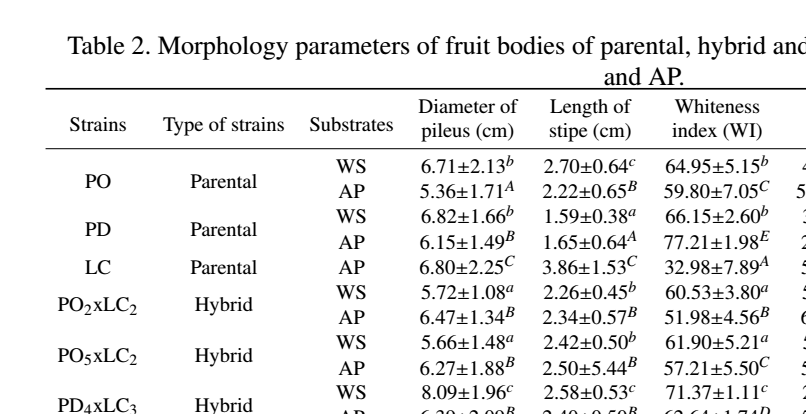 |
|
The production of parental, hybrid and reconstituted strains of Pleurotus and Lentinula edodes was evaluated using two agricultural wastes such as wheat straw (WS) and a mixture of sawdust, wheat straw, millet seed, cotton seed hull and CaCO3 (AP). The productivity, morphology parameters and chemical composition of the mushrooms, and also the chemical composition of the substrates before and after harvest were determined. The parental strain Pleurotus djamor (PD) produced on WS showed the highest productivity: total weight (239.41 g), biologic efficiency (141.86 %), production rate (1.95 %) and yield (47.88 %). The hybrid strain Pleurotus djamorxLentinula edodes (PD4xLC3) cultivated on AP presented the highest productivity parameters: total weight (213.18 g), biologic efficiency (120.01 %), productivity rate (2.40 %) and yield (41.10 %). All the strains presented fruit bodies with pileus diameter corresponding to Group 2 (5 - 9.9cm) and length of stipe corresponding to Group 1 (˂ 5 cm). The hybrids PO5xLC2 and PD4xLC3 cultivated on WS presented fruit bodies with highest protein content. The chemical composition of the substrates after harvest and the productivity parameters showing a negative correlation indicating that lignin content decreased when the total weight increased using WS as substrate, while the biology efficiency increased when the cellulose content decreased using AP as substrate in the cultivation of mushroom.
Keywords: Agricultural wastes, chemical composition, morphology, productivity.
|
|
 |

